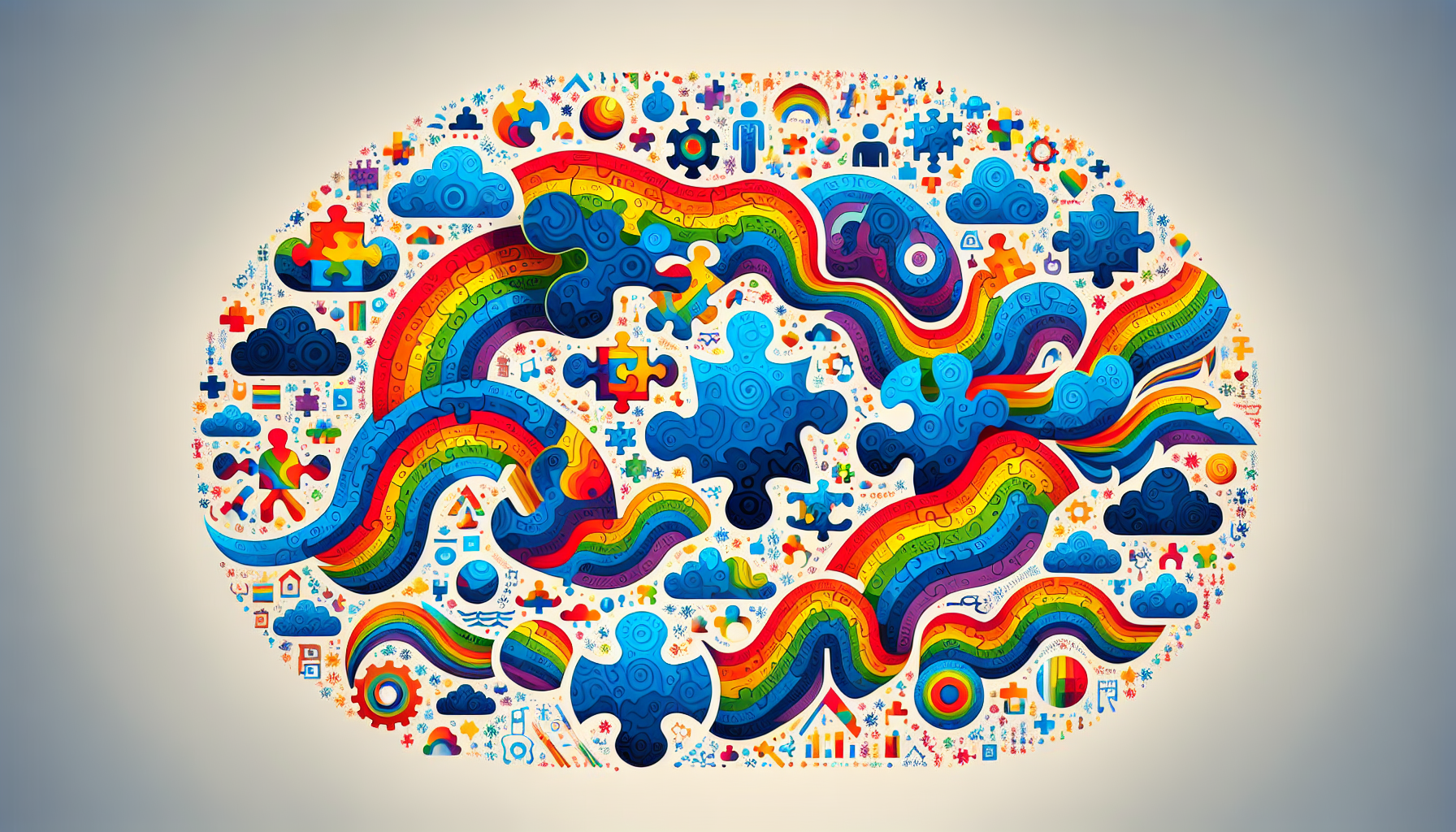Solar Energy Systems for Autism Centers
Harnessing the Power of the Sun: Transforming Autism Care Centers with Solar Energy

Revolutionizing Care through Renewable Energy
As autism care centers seek sustainable solutions to enhance operational efficiency and care quality, solar energy emerges as a pivotal technology. By reducing costs, improving environmental impact, and supporting sensory-friendly treatments, solar implementation is a vital step towards creating healthier, inclusive environments for individuals with autism. This narrative explores how solar systems can address both the fiscal needs of the centers and the therapeutic benefits for their occupants.
Economic and Environmental Benefits

How can solar energy systems benefit autism care facilities?
Solar energy systems can provide significant advantages to autism care facilities on multiple fronts. Economic savings are one of the key benefits, with facilities witnessing reductions in electricity costs of up to 50%, translating to annual savings between $6,000 and $12,000. These savings can be redirected toward essential programs and services for individuals with autism, resulting in enhanced care provision.
Environmental sustainability
Incorporating solar energy also promotes environmental sustainability. By reducing reliance on traditional fossil fuels, these systems can lower greenhouse gas emissions by up to 80%. This is crucial not only for supporting the environment but also for creating healthier indoor spaces, which is particularly important for those sensitive to air quality issues, like many individuals on the autism spectrum.
Quality of care improvement
Moreover, the installation of solar systems fosters improved quality of care. Facilities that leverage solar energy often implement additional energy-efficient measures, resulting in more therapeutic, sensory-friendly environments. Improved air quality and reduced emissions create calming spaces that are essential for effective therapy and support.
In summary, solar energy systems can transform autism care facilities through cost savings, sustainable practices, and improved care quality, aligning well with the mission of these organizations to provide the best possible support for individuals with autism.
Financial Incentives for Solar Adoption

What financial incentives are available for adopting solar energy in care facilities?
Various financial incentives are available to support the adoption of solar energy in care facilities. These include:
- Tax Credits: Many governments offer tax credits for solar energy investments, drastically reducing net costs for facilities.
- Grants and Rebates: Financial grants and rebate programs help cover installation costs, making solar systems more accessible for autism care centers.
- Community Solar Programs: These programs enable multi-family care facilities to benefit from larger solar installations. Participants can access renewable energy even if they cannot install their own systems.
In addition to these incentives, local governments can provide additional resources aimed at improving access to solar energy, especially for lower-income facilities. This includes addressing common barriers like high upfront investment costs and credit requirements.
Strategies such as power purchase agreements and green tariff programs are increasingly being employed in underserved communities. These policies facilitate easy transitions to renewable energy, contributing to equity and sustainability in energy accessibility.
By leveraging these financial incentives, autism care facilities can significantly reduce their initial investment costs while supporting vital services for individuals with autism. Community engagement in these efforts further enhances the benefits of adopting sustainable energy practices.
Enhancing Operational Efficiency

How can solar energy enhance the operational efficiency of autism centers?
Solar energy can significantly enhance the operational efficiency of autism centers by providing a sustainable and reliable energy source that reduces utility costs. Facilities can save between 20% to 50% on their electricity bills, which allows for substantial annual savings ranging from $6,000 to $12,000. This financial relief enables the reinvestment of these funds into crucial autism care programs, thereby improving the overall quality of services offered to individuals in need.
What are the environmental benefits of solar energy for autism centers?
The adoption of solar energy systems leads to a remarkable reduction in carbon emissions, reaching up to 80%. This reduction not only fosters environmental sustainability but also contributes to improved indoor air quality. Those attending autism care centers often have heightened sensitivities, making cleaner air and reduced sensory disturbances critical for their well-being.
How do solar energy solutions improve the environment for individuals with autism?
By mitigating noise pollution and creating more stable indoor climates, solar technologies enhance living conditions in these facilities. Energy-efficient technologies, such as smart thermostats and LED lighting systems, can be integrated seamlessly into autism centers. These measures contribute to creating a calming atmosphere, vital for reducing anxiety among residents and promoting positive therapeutic engagement.
Ultimately, implementing solar energy solutions fosters a supportive atmosphere while improving operational budget management and enhancing the quality of care provided.
Creating Sensory-Friendly Environments

In what ways does solar energy support sensory-friendly environments for autism?
Solar energy plays a significant role in creating sensory-friendly environments for individuals with autism. By facilitating advanced lighting and temperature control systems, these facilities can mitigate discomfort caused by harsh artificial lighting and extreme temperatures. This customization fosters a calming atmosphere, essential for emotional regulation.
One of the standout benefits of solar energy systems is the capacity to utilize natural light more effectively, reducing reliance on harsh fluorescent bulbs. Natural lighting can help create a more comfortable and pleasant environment, especially for those with sensory sensitivities.
Moreover, improved air quality is another critical aspect. Solar energy reduces emissions from traditional power sources, leading to a healthier indoor climate that minimizes sensory overload. Some autism care centers further invest their cost savings from solar energy into advanced features like motorized shades and energy-efficient LED lighting that can be adjusted based on individual preferences.
This flexibility not only enhances comfort but also helps individuals focus better, promoting a conducive atmosphere for learning and therapy. Overall, solar energy adoption significantly contributes to tailoring environments to meet the unique needs of those on the autism spectrum, enhancing their quality of life.
Case Studies and Success Stories
Pacific Autism Family Centre
The Pacific Autism Family Centre (PACE) stands as a notable example of successful solar energy implementation in autism care facilities. PACE secured an $80,000 grant to install a solar panel system that generates 47 kW of energy. This initiative not only provides an eco-friendly power source but also promotes energy independence, significantly reducing utility costs.
Success Metrics
Facilities like PACE demonstrate remarkable success metrics following solar adoption, achieving energy savings of up to 50% on electricity bills. Annually, this translates into savings of $6,000 to $12,000, which can be redirected to essential autism programs such as therapy and education.
Lessons Learned from Implementations
Key lessons from these implementations include the importance of community engagement and government support. Partnering with local stakeholders fosters a supportive environment, while state and federal incentives can alleviate initial installation costs, making solar energy feasible for more autism care centers. Moreover, the long-term benefits, with an ROI of 5-7 years, emphasize solar energy's role in enhancing operational efficiency and improving the quality of care for individuals with autism.
| Facility Name | Energy Savings | Use of Savings |
|---|---|---|
| Pacific Autism Family Centre | Up to 50% on electricity | Redirected to support autism programs |
| Other Facilities (case examples) | Similar potential savings | Invest in therapies and educational initiatives |
Challenges and Solutions in Implementation
What are the challenges of implementing solar energy in autism centers?
Implementing solar energy in autism centers presents several challenges. A significant hurdle is the initial financial investment needed to acquire and install solar panels. While these systems offer the potential for reduced electricity bills and the ability to sell excess energy back to the grid, many facilities may find these upfront costs daunting.
Another challenge is the space requirements for solar installations. Autism centers may struggle to find adequate space for solar panels, especially in urban settings where real estate is limited.
Weather variability also plays a crucial role in energy production. Solar efficiency can fluctuate with changing weather conditions, leading to uncertainties in energy supply. Fortunately, battery storage solutions can provide a buffer to store energy generated during sunny days for use during less favorable weather, thus addressing some of these concerns.
Finally, the complexities of local net metering policies can limit the financial benefits of solar energy systems in certain areas. It is essential for centers to navigate these local regulations carefully, ensuring they can maximize the advantages of solar energy. Addressing these challenges through careful planning and exploration of governmental subsidies and incentives can help autism facilities successfully incorporate solar energy into their operations.
Educational and Community Engagement
Student Engagement
Integrating solar energy in autism care facilities offers unique opportunities for educational engagement. Hands-on activities, such as constructing solar ovens, not only teach students about renewable energy but also provide a fun, interactive way to promote sustainability awareness. These initiatives empower students with autism to develop essential life skills while fostering a sense of achievement and understanding of eco-friendly technologies.
Local Support Initiatives
Community engagement is vital for the success of solar energy projects in autism centers. Local initiatives can help build connections and support networks that extend beyond the facilities. By involving families, businesses, and local organizations, these projects create a collaborative environment that strengthens the community’s commitment to enhancing care for individuals with autism. Support from the community can enhance funding opportunities and promote the adoption of sustainable practices.
Enhancing Awareness
Solar energy initiatives also serve as platforms for raising awareness about autism and the unique needs of individuals on the spectrum. As community members learn about the benefits of solar power for autism care facilities, they become more informed and supportive of sustainable practices. This increased awareness can lead to broader initiatives aimed at improving the quality of life for individuals with autism, reinforcing the importance of environmental sustainability in therapeutic care settings.
Fostering Energy Independence
Stable Power Supply
Integrating solar energy systems into autism care facilities ensures a reliable and consistent power supply. These systems provide a buffer against the unpredictability of external energy sources, essential for maintaining operations necessary for the well-being of residents. Reliability is crucial, especially when power outages occur, as therapeutic equipment often relies on continuous power.
Reduced Dependence on External Grids
Solar energy enhances energy independence, which minimizes reliance on traditional grid systems. By generating their own electricity, autism centers can mitigate risks associated with rising energy prices and market fluctuations. This independence allows facilities to maintain a steady operational capability, ensuring that services critical to individuals with autism are not disrupted.
Budget Predictability
The financial stability afforded by solar energy systems helps autism care centers achieve greater budget predictability. With reduced electricity costs—often saving up to 50%—facilities can reallocate funds toward essential therapies and support services. This long-term economic efficiency also allows for better planning and investment in programs that enhance the quality of care for individuals with autism.
Long-Term Investment Benefits

Return on investment
Solar energy systems installed in autism care facilities typically demonstrate a favorable economic advantage. The average return on investment (ROI) for these renewable energy sources is around 5 to 7 years. With sustained savings thereafter, facilities can expect annual returns exceeding 20%, enabling them to reinvest in crucial autism support programs.
Longevity of solar systems
Solar panels are known for their durability, commonly backed by warranties lasting 20 to 25 years. This longevity ensures that autism centers can rely on a consistent energy source while enjoying substantial cost savings over time. With reduced electricity expenses impacting budgets significantly, these savings can be redirected to necessary therapeutic services that enhance the well-being of individuals with autism.
Impact on sustainability practices
Integrating solar energy participates not just in cost savings but in fostering sustainable practices within autism care centers. The adoption of renewable energy reduces reliance on fossil fuels and decreases greenhouse gas emissions by up to 80%. This not only contributes to a healthier environment but also cultivates a more eco-conscious community, aligning with the values of modern therapeutic practices.
| Benefits of Solar Energy | Expected Savings/ROI | Duration |
|---|---|---|
| Reduced electricity costs | 20-50% savings | Monthly/Yearly |
| Longevity of systems | 20-25 years warranty | Long-term |
| Environmental impact | 80% reduction in emissions | Ongoing |
The combination of these financial and environmental aspects underscores solar energy as a smart long-term investment for autism care facilities.
Integrating Smart Technologies
Smart Thermostats
Smart thermostats play a pivotal role in managing temperature control within autism care facilities. These devices enable precise adjustments to indoor climate, ensuring that spaces remain comfortable and calming. For individuals sensitive to temperature fluctuations, maintaining a stable environment is critical. By learning patterns in energy use, smart thermostats contribute to energy efficiency while enhancing the comfort of residents.
Energy-Efficient Lighting
Energy-efficient lighting, such as dimmable LED lights, further supports sensory needs. These lighting solutions not only reduce energy consumption but also provide adjustable brightness levels, allowing for a tailored environment. Care facilities can soften lighting in specific areas, mitigating sensory overload and creating a more soothing experience for individuals with autism.
Role in Managing Sensory Sensitivities
Integrating smart technologies with solar energy systems not only lowers operational costs but also promotes wellness among residents. The ability to effectively control temperature and lighting is crucial in minimizing stress and anxiety for individuals on the autism spectrum. Consequently, this synergy fosters nurturing and healing environments, ultimately improving therapeutic outcomes and the overall quality of care.
Creating Healthier Therapeutic Spaces
Air Quality Improvements
The integration of solar energy systems in autism care facilities significantly enhances indoor air quality. By reducing reliance on traditional fossil fuels, these systems help to cut greenhouse gas emissions by up to 80%. This reduction is crucial for individuals with autism, who may be particularly sensitive to air pollutants. Improved air quality contributes to better respiratory health and creates a more conducive environment for therapy and interaction.
Programming Enhancements
Utilizing the financial savings from solar power, which can reach up to 50% on electricity bills, autism centers can bolster essential programs. This funding shift allows for the development and expansion of behavioral therapies, educational initiatives, and specialized support services. For instance, the Pacific Autism Family Centre has effectively redirected savings from their solar initiatives into enriching autism programs.
Well-Being Support
The use of solar energy not only strengthens operational efficiency but also fosters a sense of tranquility. Enhanced energy-efficient systems, like smart thermostats and LED lighting, contribute to creating calming environments that align with the sensory needs of individuals with autism. These improvements directly support the overall well-being of residents, promoting mental health and reducing anxiety through more comfortable, therapeutic spaces.
Towards a Sustainable Future for Autism Care
The myriad advantages of solar energy systems are clear, particularly in enhancing the capacity of autism care facilities to deliver better care. Through substantial cost savings, improved environmental conditions, and support for sensory needs, solar innovations not only offer financial prudence but also a commitment to future-friendly practices. As the landscape of autism care evolves, integrating renewable energy sources stands as a benchmark for progressive care strategies, promising a harmonious blend of economic efficiency and environmental stewardship.
References
- Solar Energy for Autism Care Facilities - Golden Steps ABA
- Solar energy systems for autism centers - Cross River Therapy
- How Solar Power Benefits Autism Communities | Discovery ABA
- Eco-Friendly Autism Centers Powered by Solar Energy
- Eco-Friendly Autism Centers Powered by Solar Energy - At-Home ...
- Solar Panels For Autism Care Facilities - Supportive Care ABA
- Solar Energy for Autism Care Facilities - Bridge Care ABA
- Solar Energy Systems for Autism Centers - B Above Services
- Solar Energy and Autism Care Centers - My Team ABA
Find More Articles
Contact us
North Carolina, Tennessee, Nevada, New Jersey, Utah, Virginia
New Hampshire, Maine
Massachusetts, Indiana, Arizona, Georgia
.avif)







.jpeg)





.jpeg)





























%2520(1).jpeg)

.jpeg)












.jpeg)



















.jpeg)


.jpeg)



.jpeg)














